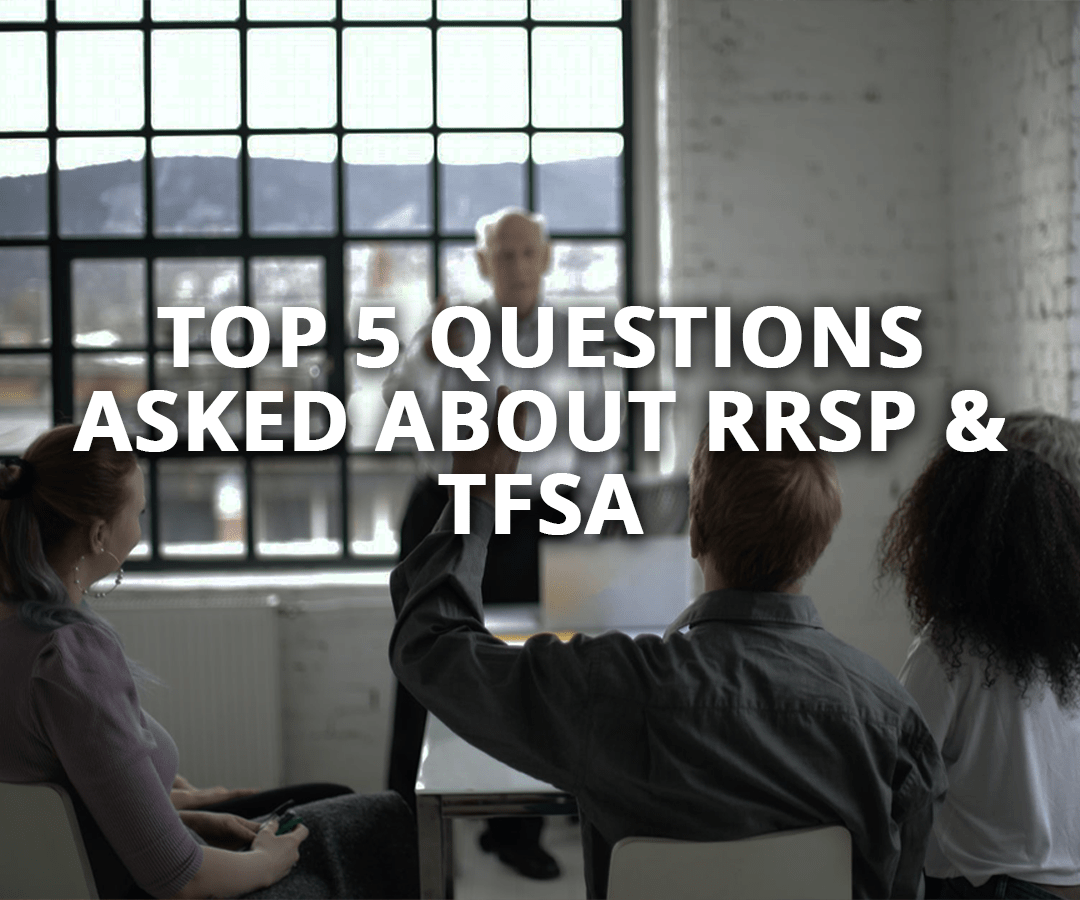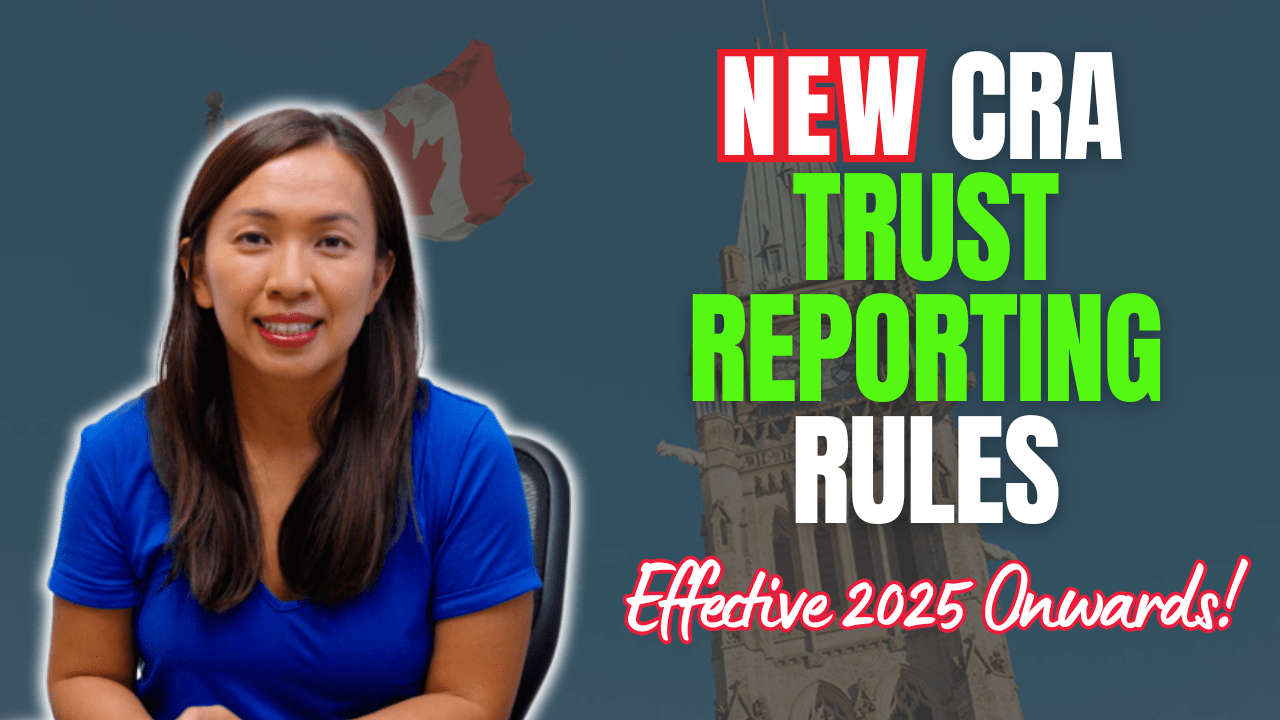
I just finished a webinar on how to use RRSP & TFSA to split income with low income spouses and minimize overall family taxes for my clients last Friday.
It is RRSP contribution season right now. I thought I would take this opportunity to discuss the most frequently asked questions about RRSP & TFSA.
Just a friendly reminder, you have until Monday March 1 to contribute to your RRSP to qualify to claim the RRSP contribution against your 2020 tax return.
If you are considering putting money in TFSA and assuming you have NOT contributed into your TFSA account in the past, cumulative TFSA contribution is $75,500. 😊
- What is the biggest difference between TFSA and RRSP?
TFSA and RRSP are both registered accounts in the eyes of Income Tax Act. You can only invest in the qualified investments as permitted by the Income Tax Act. Qualified investments generally include stocks, private loans, mutual funds, etc.
Management fees for both TFSA and RRSP accounts are both non-deductible.
Even though TFSA and RRSP are both registered accounts, there are some major differences between the two:
| RRSP | TFSA | |
| Eligibility | You would need to have RRSP contribution room to qualify to make contribution to your RRSP. Most banks would require the taxpayer to reach the age of 18 before they can open a RRSP account. | You must be over the age of 18 for you to make contribution to your TFSA account. |
| Contribution limit | Contribution limit is calculated based on 18% of your earned income. In another words, if you never receive salary (only receive dividend income), you would have never created RRSP contribution room. Annual contribution limit is capped by the government on an annual basis. In 2020, maximum contribution limit is $27,230. What this means is that even if you make $200,000 salary, 18% of your earned income would have been equivalent to $36K contribution limit, the government would lower it to $27,230 in 2020. Also, if you do not use your contribution limit, it can be added to the future years for future use. You can often find the cumulative contribution limit on your prior year Notice of Assessment. | TFSA contribution limit is granted by the government on an annual basis, regardless of whether you work or not. In 2021, TFSA contribution limit was $6,000. Cumulative TFSA contribution limit assuming you have never made any TFSA contribution is $75,500. Similar to RRSP, the unused contribution room is cumulative. |
| Withdrawals | RRSP withdrawals are taxable. | TFSA withdrawals are non-taxable. |
| Withdrawn amounts on contribution limits | When funds are withdrawn from an RRSP, your RRSP contribution room is “not replenished”. In another words, amounts withdrawn would not be added back to the RRSP contribution room to allow for future RRSP contribution. | When funds are withdrawn from the TFSA account, the amount withdrawn is added back to the TFSA contribution room in the following year. |
| Tax | When you contribute to your RRSP, contribution is tax deductible against your top marginal tax bracket income. You will reduce the amount of tax you would have to pay to CRA. | When you contribute to TFSA, contribution is not tax deductible. |
| Plan maturity | When you reach the age 71, your RRSP has to be converted into RRIF and you are required to withdraw money from your RRIF annually. | There is no age limit or plan maturity with TFSA contribution. |
| Spousal plan | You can use your RRSP contribution room to make contribution to your spouse RRSP. This can be beneficial tool to split income with your low income spouse. | There is no spousal TFSA contribution. There is no attribution rule on TFSA contribution either. |
- I have a limited amount of money available. Should I contribute to my RRSP first or TFSA first?
Most Canadian taxpayers have this question. The bottom line is, RRSP is a tax deferral plan, you would have to pay tax eventually. TFSA is a tax-free plan. Money you make generally isn’t taxable.
When TFSA was first introduced, CRA did an example on whether it is more beneficial to contribute to RRSP or TFSA.
The bottom line is, if you are expecting that you will be paying the same amount of taxes as you are now when you withdraw from your RRSP, and assuming that the rate of return between TFSA and RRSP is the same, TFSA or RRSP will give you the exact same amount of return.
If you are expecting that you will be paying less tax when you withdraw from your RRSP, of course, RRSP is a better vehicle.
If you are expecting to pay more taxes in the future, then TFSA is a better investment vehicle.
If you’re unsure, this is an idea I borrow from a friend…
Assuming you’re a salaried employee, I would contribute to RRSP first, use the tax refund to contribute to TFSA. 😊
You’re creating two assets with same contribution. It might look even more favourable in the eyes of the lenders in the future.
- How do I invest my funds in RRSP & TFSA into real estate?
You cannot own a piece of property directly inside RRSP and TFSA.
However, you can lend your money within your RRSP and TFSA to a real estate investor as private mortgages. You can earn 8% and above interest return lending money as private mortgages.
Alternatively, you can also invest in Real Estate Investment Trusts (REITs), public and private one as well. I personally invest in a private REIT myself.
There’re also certain land development/building opportunities structured in the form of limited partnerships. These opportunities are often structured as qualified investment vehicles as defined by the Income Tax Act for RRSP & TFSA.
- Can I trade stock options in RRSP or TFSA?
You can sell covered calls, buy calls and buy puts in RRSP and TFSA.
Selling naked puts, naked calls and shorting stocks typically require a margin account. Banks do not allow RRSP and TFSA accounts to be setup as margin account. Hence, you are not able to trade naked puts, naked calls and short any stocks in RRSP & TFSA.
With regarding to trading in TFSA, if you’re showing day trading behavior, CRA has the right to add the income you make in your TFSA account from the day trading activities to your income instead.
So be careful with your trading activities in your TFSA account.
- How much taxes do I have to pay when I withdraw money from RRSP? Is the amount withhold by the banks enough to cover my taxes?
Many taxpayers misunderstand the tax implication of RRSP withdrawals.
Most banks withhold 10% tax from your withdrawal when you withdraw less than $5,000.
But… the actual tax owing is really based on your marginal tax rate.
If you already make $100K salary, your marginal tax rate on additional $5K of RRSP income would be 43%.
Even though the bank withholds 10% tax and send it to CRA on behalf of you, the reality is that you still owe CRA 33% tax on the withdrawal.
Many taxpayers also said… “I am withdrawing the smaller chunk multiple times to avoid withholding tax…”
Typically, if you withdraw a large amount from your RRSP, the bank likely withhold 20% to 30% on behalf of CRA.
When you withdraw smaller chunk of money from your RRSP multiple times, you might be able to avoid significant tax withholding at the time of withdrawal.
But at the end of the day, the same principle stated above still apply. The actual amount of tax payable on your RRSP withdrawal really depends on your marginal tax rate.
If you have no income, chances are, you might have some income tax refund. If you already have your job income, you might have to pay additional tax on RRSP withdrawal.
Good luck with this RRSP contribution season!
Until next time, happy Canadian Real Estate Investing.
Cherry Chan, CPA, CA
Your Real Estate Accountant





